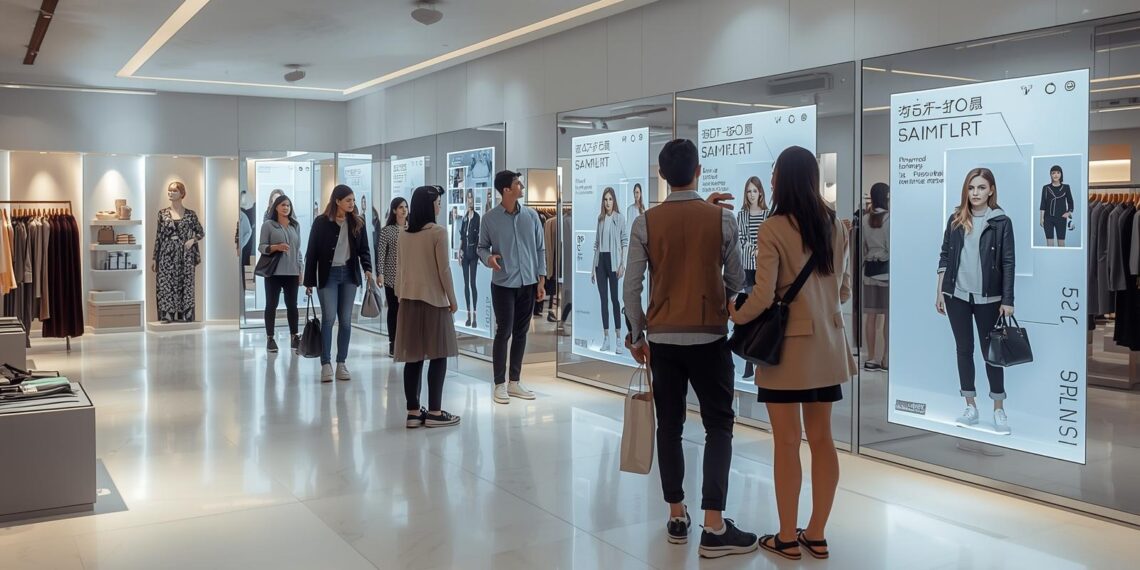In the realm of retail, innovation is the key to captivating consumers and staying ahead of the competition. One such groundbreaking innovation is Mirror Augmented Reality (AR), which is rapidly transforming retail experiences. By seamlessly integrating digital information with the physical world, smart mirrors are revolutionizing how consumers interact with products, ultimately reshaping the retail landscape.
Mirror AR refers to the use of augmented reality technology in mirrors to provide interactive and immersive experiences for consumers. By overlaying digital content onto a mirror’s reflection, customers can visualize how products will look or function without physically interacting with them. This technology is particularly influential in the fashion and beauty industries, where visualizing products before purchase can significantly impact buying decisions.
The Rise of Smart Mirrors
Smart mirrors are not merely reflective surfaces. They are equipped with advanced sensors, cameras, and displays that enable them to provide real-time information and suggestions. These mirrors are becoming increasingly common in retail environments, offering a unique blend of convenience and personalization.
Transforming the Retail Experience
The integration of Mirror AR in retail settings is altering the shopping experience in several profound ways. Here’s how:
Personalized Shopping Experiences
Consumers are increasingly seeking personalized shopping experiences that cater to their individual preferences. Smart mirrors enable this by allowing customers to virtually try on clothing, accessories, and makeup. By simply standing in front of a smart mirror, customers can see how different outfits or shades of makeup will look on them, eliminating the need for physical trials and reducing the hassle of changing rooms.
Enhanced Customer Engagement
Mirror AR fosters greater customer engagement by providing interactive content that captivates the consumer’s attention. Retailers can utilize these mirrors to display personalized recommendations, promotional content, and style suggestions. This interactive approach not only enhances the shopping experience but also encourages customers to spend more time in-store, increasing the likelihood of making a purchase.
Streamlined Decision-Making Process
The ability to visualize products in real-time simplifies the decision-making process for consumers. Smart mirrors allow for side-by-side comparisons of different products, enabling customers to make informed decisions quickly. This reduces the uncertainty that often accompanies purchasing decisions and leads to higher customer satisfaction.
The Impact on the Fashion Industry
The fashion industry stands to benefit significantly from the adoption of Mirror AR. Here are some key impacts:
Reducing Returns and Exchanges
One of the most significant challenges in fashion retail is the high rate of returns and exchanges. By allowing customers to visualize products accurately before purchasing, smart mirrors can reduce the likelihood of returns due to size, fit, or style issues. This not only benefits retailers by minimizing return processing costs but also enhances the overall customer experience.
Sustainable Fashion Practices
Mirror AR promotes sustainable fashion practices by reducing the need for physical trials, which often involve the use of disposable packaging and resources. By encouraging virtual trials, retailers can minimize waste and contribute to more eco-friendly shopping practices.

Broader Implications for the Retail Sector
While the fashion industry is a prime beneficiary of Mirror AR, the implications extend to the broader retail sector:
Expanding Beyond Fashion
The application of Mirror AR is not limited to fashion alone. Industries such as home decor, eyewear, and even automotive are exploring the potential of smart mirrors to enhance consumer experiences. Imagine visualizing how a piece of furniture would look in your living room or how a new pair of glasses would complement your face shape—these possibilities are becoming realities with Mirror AR technology.
Integrating Online and Offline Experiences
Mirror AR bridges the gap between online and offline shopping experiences. By offering the convenience of online browsing with the tactile engagement of in-store shopping, retailers can provide a cohesive omnichannel experience. This integration is crucial in meeting the expectations of modern consumers who desire flexibility and convenience in their shopping journeys.
Challenges and Future Prospects
While Mirror AR presents numerous opportunities, it also comes with challenges that need to be addressed for widespread adoption.
Technical and Privacy Concerns
The implementation of smart mirrors requires sophisticated technology, which can be costly and complex to maintain. Additionally, concerns about privacy and data security must be addressed to ensure consumer trust. Retailers need to prioritize safeguarding customer data while providing seamless and secure experiences.
The Future of Mirror AR in Retail
As technology advances and becomes more accessible, the potential for Mirror AR in retail will continue to grow. Retailers must remain adaptable and open to integrating new technologies that enhance consumer experiences. The future of retail lies in creating immersive, personalized, and interactive environments that captivate consumers and drive brand loyalty.
Conclusion
Mirror Augmented Reality is not just a futuristic concept—it’s a present-day reality reshaping the retail sector. By offering personalized, engaging, and efficient shopping experiences, smart mirrors are revolutionizing how consumers interact with products. As industries continue to explore the potential of this technology, the future of retail is poised for a transformation that prioritizes consumer satisfaction and innovation.
For wellness product developers, lifestyle magazine editors, and health and wellness coaches, staying informed about the latest technological advancements like Mirror AR is crucial. It allows them to remain competitive, create relevant content, and develop strategies that align with evolving consumer behaviors and preferences.
In embracing Mirror AR, retailers are not just adapting to change; they are leading the charge toward a more dynamic and connected retail environment. The possibilities are vast, and the journey is just beginning.




